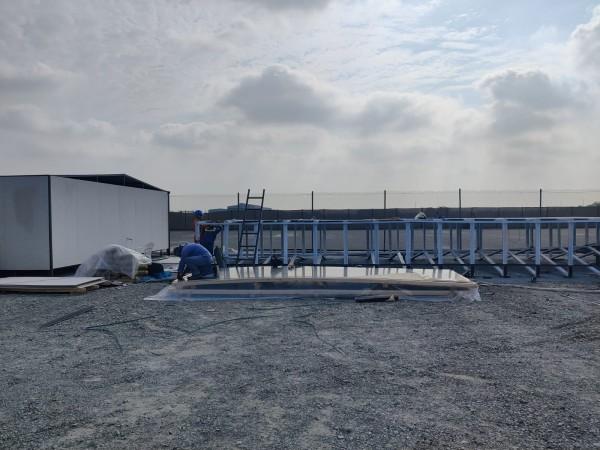A decade ago, few could have envisioned how aluminum barge builders would reshape the modern marine industry. Surging fuel prices, strict rules on emissions, and an increasing focus on efficiency have created a demand for lighter, stronger, more sustainable marine vessels; among such innovators is VU Marine. Indeed, today the name VU Marine can hardly be mentioned without evoking images of advanced aluminum construction and forward-thinking vessel design.
The Aluminum Advantage
Until recent times, most barges were fabricated from steel-heavy, durable, but maintenance-intensive. Today, aluminium barge manufacturers are proving that lighter doesn't necessarily mean weaker. The density of aluminum is just one-third that of steel, or approximately 2.7 g/cm³ in comparison with 7.8 g/cm³ for steel. The difference directly translates into improved efficiency.
Studies have shown that, compared to traditional steel barges, aluminium-built vessels use up to 20 % less fuel. With fuel accounting for roughly 40 % of the cost of marine operation, the savings are significant. The lightweight structure increases payload capacity such that operators are able to carry more cargo per trip without increasing draft depth or power needs.
Adding to the case is the inherent corrosion resistance of aluminium. Where steel requires constant repainting, anti-fouling, and dry-docking, aluminium forms its own protective oxide layer. Over a vessel's lifetime, this could cut maintenance costs by around 40%, according to industry estimates. To marine operators, that means more uptime, fewer repairs, and longer service intervals.
Industry Growth and Global Trends
The numbers confirm aluminium's growing role. The global marine aluminium market was valued at about US$1.83 billion in 2024 and is projected to hit US$2.34 billion by 2032, growing at a 3.18% CAGR. Similarly, the broader marine barges market-all types of vessels-was worth US$154 billion in 2024 and is forecasted to reach US$217 billion by 2033-a 3.9% CAGR.
Such steady growth reflects how operators, especially barge builders in UAE and other key maritime regions, are embracing lighter and more environmentally friendly vessels. In a market driven by the efficiency and environmental responsibility of vessels, aluminium stands out as both a practical and strategic material choice.
How VU Marine Leads This Change
VU Marine has taken this opportunity to position itself as one of the very few companies able to deliver the full potential of aluminium barge construction. Its designs emphasize practical performance, modular flexibility, and long-term cost control—attributes that speak directly to operators' top concerns.
1. Efficiency and Payload Capacity
Lighter hulls mean higher payloads. VU Marine’s aluminium barges carry more cargo without extra fuel burn, increasing profitability voyage after voyage.
2. Low Maintenance - Long Life
Thanks to its resistance to corrosion, vessels require less painting and fewer repairs. Over time, the cost of owning the vessel drops dramatically.
3. Adaptability and Innovation
VU Marine uses modular construction that allows quick customization for inland transport, offshore support, or hybrid propulsion systems.
4. Environmental and Sustainability Edge
This metal is almost completely recyclable. More than 75% of all aluminium ever produced is used today. By choosing aluminum, this will help support the sustainability targets as well as reduce marine operations' carbon footprint.
Why Aluminium Works for Modern Barges
Different types of aluminium barges have a broad field of application and are also highly suitable for:
- Shallow-water operations, as low weight lets the drive in lower-depth channels.
- Offshore support and coastal transport, for which corrosion resistance is crucial.
- Renewable energy projects, like offshore wind installations, demand fast and flexible deployment.
- Variable-load routes where lower hull weight maximizes profitability.
Overcoming the Challenges
Transitioning to aluminium does present some challenges. The initial material cost and specialized welding processes compared to steel are higher, but the savings over time offset that difference. The global value of the marine-grade aluminium market in 2024 was US $3.36 billion and is expected to breach US $5 billion by 2035, growing at 3.7 % CAGR, signaling stronger supply chains and broader availability.
Skilled fabrication is needed to ensure the avoidance of galvanic corrosion when aluminium is used in conjunction with other metals. The experienced barge building company—like VU Marine—ensures design integrity, precision welding, and a high-grade finish for long-lasting performance.
Why Now Is the Right Time
Several converging trends make this the right era for aluminium barges:
- Fuel and Emission Regulations: Stricter IMO and local laws push operators toward lighter and cleaner vessels.
- Infrastructure Development: New ports, inland routes, and offshore projects call for durable yet efficient barges.
- Manufacturing Advantages: Automated welding, better alloys, and digital modelling mean lower production time and cost.
- Corporate Sustainability: Now, companies emphasize the use of recyclable materials and green certification.
With these forces in play, aluminum construction has rapidly become the new standard rather than the exception.
What It Means for the Future
To yards like VU Marine, for example, it is much more than a new material; it's the starting point for a smarter marine future. Operators get barges with fewer repairs, lower fuel bills, and improved environmental credentials, while logistics networks get faster deployment and a more flexible marine infrastructure.
Every metric, from fuel savings, payload gain, maintenance reduction, and recyclability, indicates a clear path: aluminum. As markets expand and regulations further tighten, the advantages of performance and sustainability for aluminium will only continue to grow.
Conclusion
The transformation is not theoretical; rather, it is highly visible in the fleets already operating worldwide. Builders like VU Marine are proving that innovation, material science, and sustainability can come together to redefine what a barge can achieve. With aluminium's light weight, durability, and recyclability, the marine industry is moving into a new era-one built on smarter design, greener materials, and efficiency over the long term. In that evolution, the aluminium barges aren't just part of the change-they are the change.



